#Sergei Mikhailovich Prokudin-Gorskii
Text
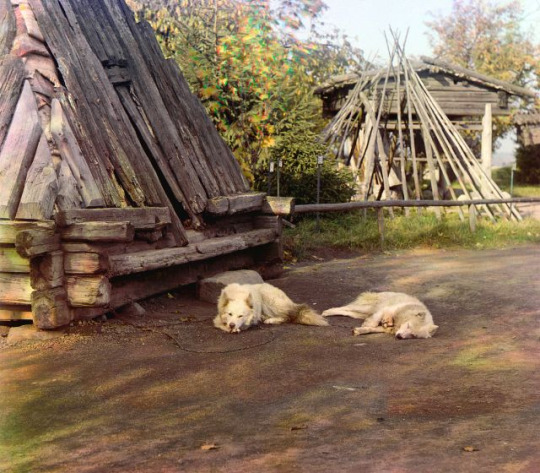
Guard dogs
By: Sergei Mikhailovich Prokudin-Gorskii
1905-1915
#domestic sunday#landrace dog#dog#canine#carnivore#mammal#1900s#1910s#Sergei Mikhailovich Prokudin-Gorskii
180 notes
·
View notes
Text
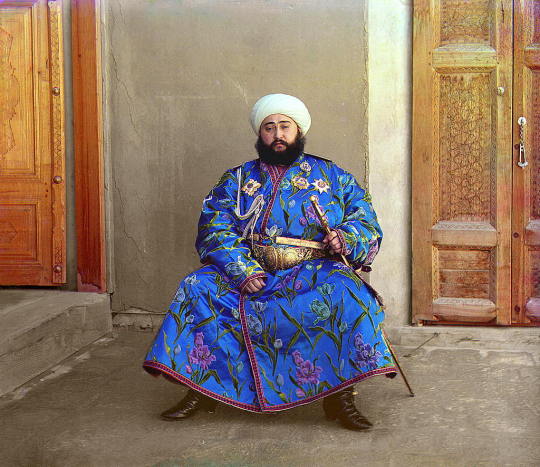
Emir of Bukhara, Uzbekistan, 1911
Photo by Sergei Mikhailovich Prokudin-Gorskii
90 notes
·
View notes
Photo
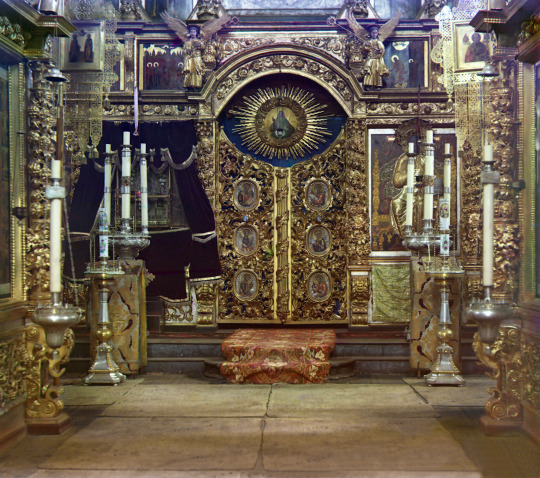
Holly Doors of the summer Church of the Fyodorovskaya Mother of God. Yaroslavl, 1911
Sergei Mikhailovich Prokudin-Gorskii Collection (Library of Congress)
152 notes
·
View notes
Text
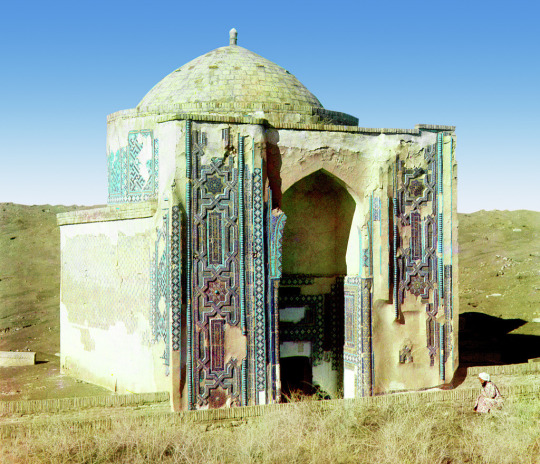



Samarkand, photos by Sergei Mikhailovich Prokudin-Gorskii, early 20th century
Samarkand is one of the oldest inhabited cities in the world. Founded circa 700 B.C. Alexander the Great conquered it in 329 B.C. In 1370, Timur decided to make Samarkand the capital of his projected world empire.
2 notes
·
View notes
Text
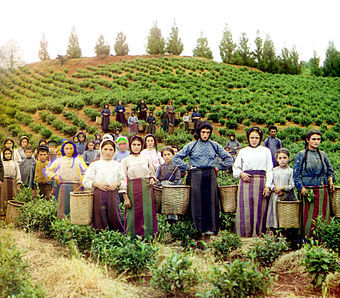
Ethnic Greek women and children harvesting tea in Chakva, Georgia, between 1905 and 1915. Photograph by Sergei Mikhailovich Prokudin-Gorskii
4 notes
·
View notes
Text
My Russian Characters
When I wrote my first book, I needed to give the main character a robust background from the 1500s. Specifically, she needed a humble childhood to give her the strength to become a powerful woman. My inspiration came from the Smithsonian website featuring three-part color photographs from the 1910s by Sergei Mikhailovich Prokudin-Gorskii.
These early photographs have been painstakingly restored to show breathtaking images of Rural Russia, and I used these photographs as visual inspiration. Besides this first book, in the sequel, the other main character searches for her all across Russia. In my third book, there are Russian spies.

Why did I choose so many Russian characters? I thought I made a random choice, but now I have a different conclusion. I like the image (stereotype) of a Russian person. They have great inner strength, an influential culture, and a vast country that begs to be explored. I treat all my Russian characters as reserved, intelligent, and wise.
What about the Cold War and communism? I tread lightly in this area. My characters regret their negative past and have moved on to new challenges. I see modern Russian culture as transforming and powerful. This has provided lots of great material for my third book.
I think it is essential for a character to have pride in themselves, and this is what comes to mind when I think of a typical Russian, resulting in tremendous inner strength. Russia, as a nation, has made many accomplishments, and their influence is vast.
How did I create my Russian characters even though I have never been there? Lots of research. Fortunately, the internet is a powerful resource. Did the tragic war in Ukraine alter my perception? My books were all published before this significant event, so the answer is no. Unfortunately, my future work must consider this circumstance.
If a writer wants to write a powerful story, they need potent characters; in my experience, a Russian person fits that bill. Why? Their power comes from within. As opposed to a character that needed to rise to the occasion. (A person that needs to become strong to rescue their child.)
Yet, that is not the entire story. I like my Russian characters. They have an honest quality that makes them approachable. If they were real, I would like to ask them how they feel about world events and their childhood. Unfortunately, that will never happen, except inside my bonkers mind.
You’re the best -Bill
September 30, 2023
Hey book lovers, I published four. Please check them out:
Interviewing Immortality. A dramatic first-person psychological thriller that weaves a tale of intrigue, suspense, and self-confrontation.
Pushed to the Edge of Survival. A drama, romance, and science fiction story about two unlikely people surviving a shipwreck and living with the consequences.
Cable Ties. A slow-burn political thriller that reflects the realities of modern intelligence, law enforcement, department cooperation, and international politics.
Saving Immortality. Continuing in the first-person psychological thriller genre, James Kimble searches for his former captor to answer his life’s questions.
These books are available in soft-cover on Amazon and eBook format everywhere.
0 notes
Text
SAMARKAND, UZBEKISTAN 🇺🇿: BIBI KHANYM MOSQUE 🕌
Bibi-Khanym Mosque 🕌Timur’s favorite wife asked his permission to build this massive mosque next to the bazaar. He said yes.
29june23
A photograph taken sometime between 1905 and 1915 by color photography pioneer Sergei Mikhailovich Prokudin-Gorskii shows the mosque’s appearance after its collapse in the earthquake of 1897. (wiki)
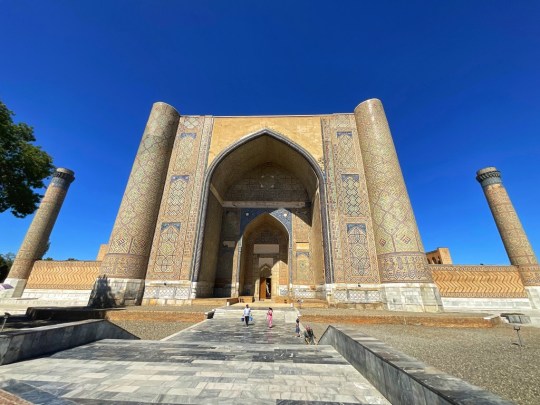
View On WordPress
#art#Bibi Khanym Mosque#history#photography#Samarkand#Temur#TOKIDOKI Nomad blog#TOKIDOKI Nomad travel blog#Travel#Uzbekistan#World Travel
0 notes
Text
Rare and impressive colour photographs of the vast Russian empire, made by Prokudin-Gorskii between 1905 and 1915.
Historic Photographs:
0 notes
Photo
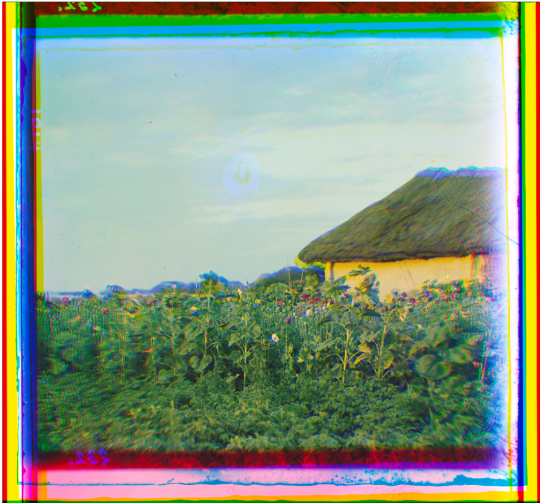
Sergei Mikhailovich Prokudin-Gorskii
#Sergei Mikhailovich Prokudin-Gorskii#art#photography#contemporary art#color photography#early photography#prokudin-gorskii#nature#flowers
31 notes
·
View notes
Photo

Ural Owls. From the Collection of N.P. Alin in Cherdyn
In 1909 and 1910, Russian photographer Sergei Mikhailovich Prokudin-Gorskii (1863–1944) traveled extensively in the territory around the Ural Mountains, where he photographed railroad installations, factories, urban settings, and natural landscapes. His visit to the northern Urals in the summer of 1912 included a trip to the regional center of Cherdyn, located 310 kilometers north of the city of Perm. By the time this photograph was taken, Cherdyn, which was situated on the Kolva River, was a regional trade and administrative center. During his visit, the photographer viewed the large collection of stuffed animals belonging to Nikolai P. Alin, a wealthy merchant. Prokudin-Gorskii photographed a number of displays, including this view of two owls resting on pine boughs. The owl on the left has the brown-specked plumage typical of the Ural owl (Strix uralensis). The Ural owl has no “ear” tufts, and the appearance of the male and female is similar. The adult wing span is typically 115 centimeters. The discoloration of the dark background in this image reflects damage to the glass negative. The Alin collection was subsequently transferred to the Cherdyn Regional History Museum. Prokudin-Gorskii used a special color photography process to create a visual record of the Russian Empire in the early 20th century. Some of his photographs date from about 1905, but the bulk of his work is from between 1909 and 1915, when, with the support of Tsar Nicholas II and the Ministry of Transportation, he undertook extended trips through many different parts of the empire.
65 notes
·
View notes
Photo

In this image a Sartianka (Sart woman) stands at the entrance of her home. She is covered in a hooded robe in strict observance of the practice of purdah (from the Persian word for “curtain”).
The robe has a trimmed opening with draw strings for the face.
Photo credit: Sergei Mikhailovich Prokudin-Gorskii (1863–1944).
9 notes
·
View notes
Text
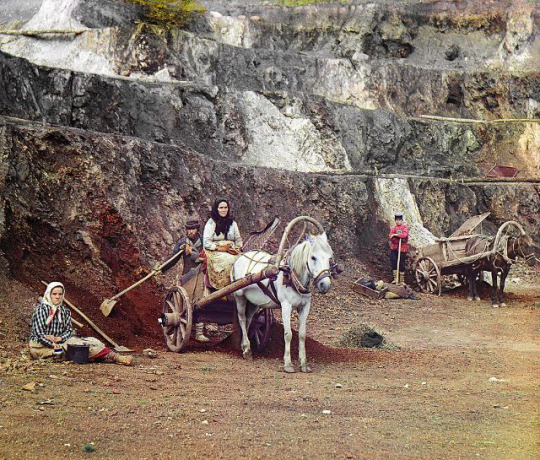
A family, with shovels and horse-drawn carts, working at the iron mines in the Bakaly hills
By: Sergei Mikhailovich Prokudin-Gorskii
1905-1915
64 notes
·
View notes
Photo

Obrazt︠s︡y mozaichnykh sti︠e︡n v Shakh-Zinde. Samarkand
Title Translation: Mosaics on the Shakh-i Zindeh walls. Samarkand
Sergeĭ Mikhaĭlovich Prokudin-Gorskiĭ
Library of Congress
11 notes
·
View notes
Text
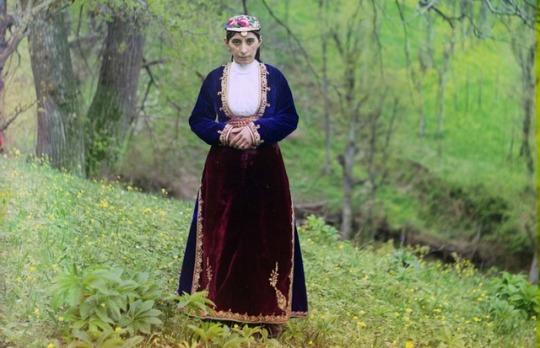

Armenian Women in Traditional Costume
Sergei Prokudin-Gorskii, c. 1910
#armenia#armenian#sergei prokudin-gorskii#costume#sergei mikhailovich prokudin-gorskii#edwardian#ethnic#early photography
23 notes
·
View notes
Photo
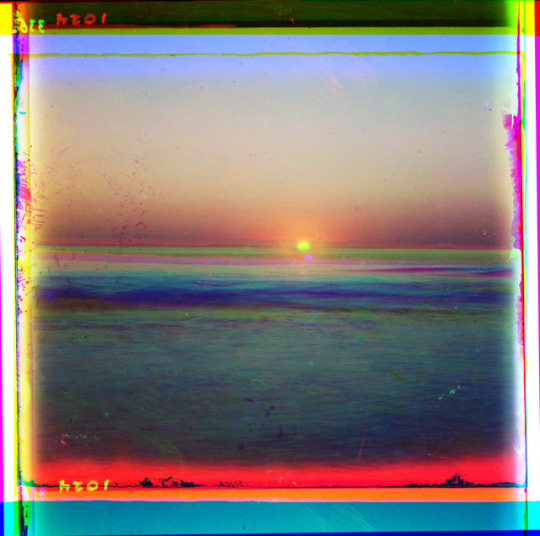
sergei mikhailovich prokudin-gorskii… the russian empire, 1909 @ loc
83 notes
·
View notes
Photo
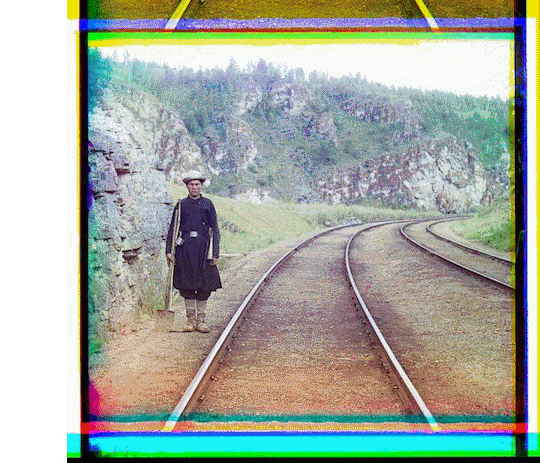
Bashkir switchman. Ural mountains region, Russia. Color separation negatives. Sergeĭ Mikhaĭlovich Prokudin-Gorskiĭ. 1910. Library of Congress.
Excavation near Iurezan Bridge. Ural Mountains Region, Russia Empire. Three-color separation negatives. Sergeĭ Mikhaĭlovich Prokudin-Gorskiĭ. 1912. Library of Congress.
(via nemfrog +)
#bashkir#switchman#railway#ural#1910#sergei mikhailovich prokudin-gorskii#prokudin-gorskii#excavation#color separation negative#iurezan#ard it#ard-it#ard#ard.it#ardit#iandi#iandiincreation#i and i in creation
7 notes
·
View notes